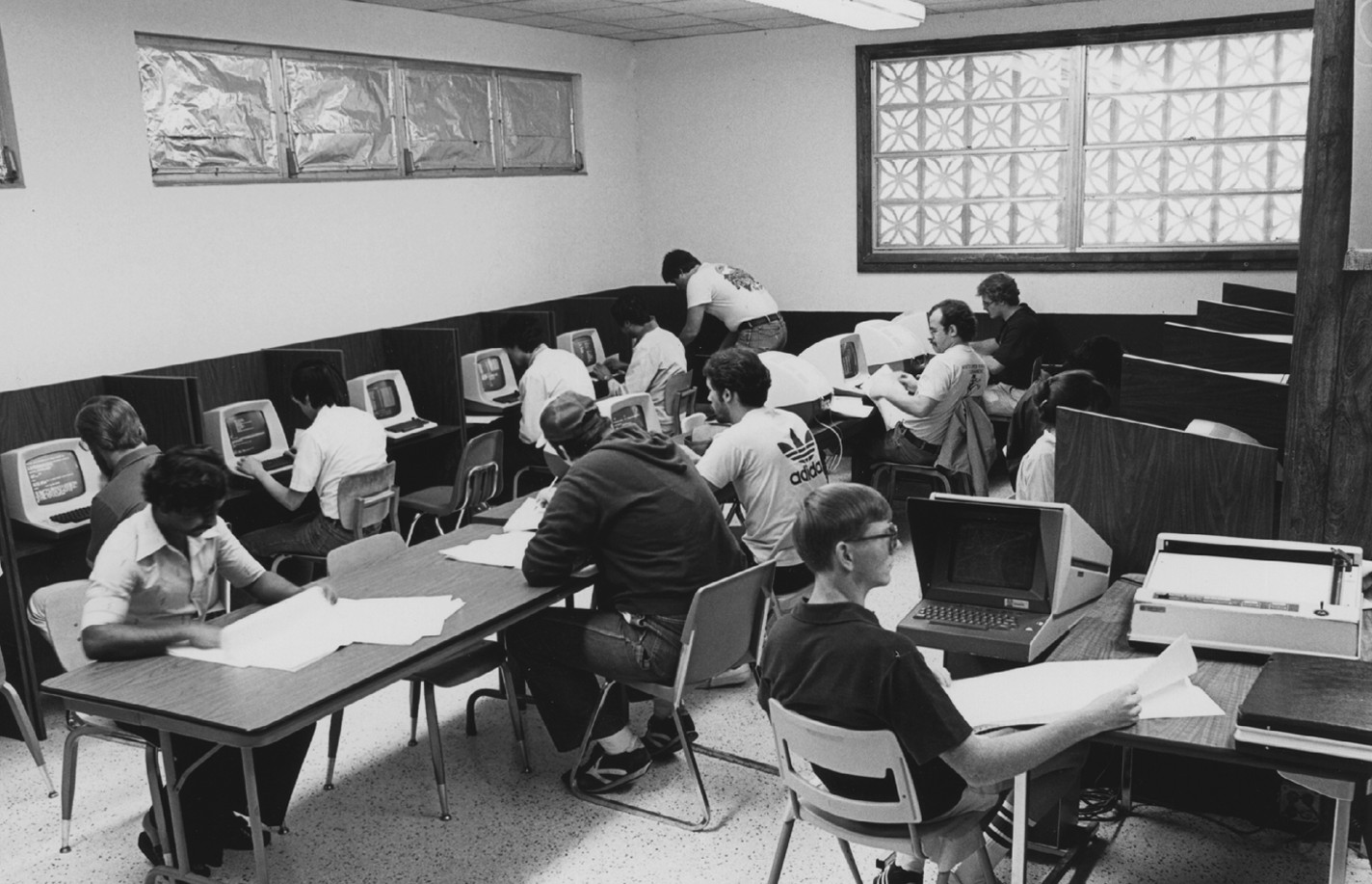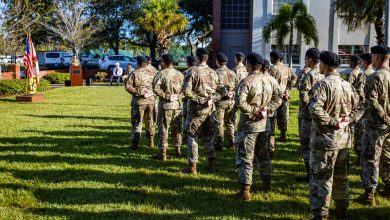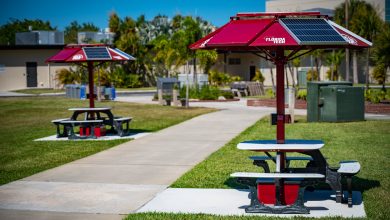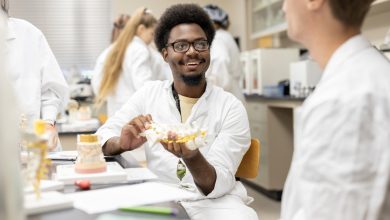The Secret History of IP 192.203.97.0
Dateline: Florida Tech 1988

Making the Connection
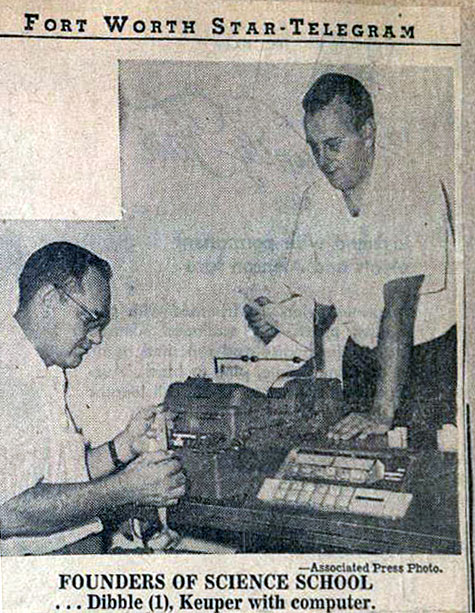
Thirty years ago on Wednesday, November 2, 1988, Florida Tech activated its Class C IP address giving the university access to the Internet with a 56k link to the University of Florida. Michael Gallo, Muslim Gadiwalla, Dan Stack, and Dee Dee Pannell, director of the Academic Computing Center, huddled around an ancient VAX terminal in room Q-7 in the Quad. A handful of technical issues needed to be sorted out. The final step was programming the Proteon router correctly via a command text line. (Graphical user interfaces were not an option in 1988.) With fingers crossed, Dee Dee Pannell gave the order to make the connection. Here we are today.

The woman in charge of connecting the university to the Internet, Dee Dee Pannell, began her career at Florida Tech in 1966 as a part-time mathematics instructor. Fourteen years later John Miller named her director of the ACS. Under her leadership, the ACS grew to include 7 full-time employees and as many as 15 student lab assistants. In 1987, Michael Gallo, now an full professor in the College of Aeronautics, went to work for Pannell. Gallo remembers that Pannell, Gadiwalla, Stack, and he struggled “to establish our connection to UF.” Resources were scarce. The break through came when “Dee Dee and I secured funding from the NSF to expand the university’s local area network as well as upgrade our link to UF via a T1 circuit.” A modest person, Pannell characterized her role as only “a facilitator” in the process. Pannell, however, had done much more than facilitate. She had visited other universities and built a host of contacts both within and outside Florida Tech who supported the internet initiative. Countdown College owes much to Pannell.
Computing at Countdown College
Computing came to Florida Tech (BEC) in February 1959 when the college acquired a Royal-McBee Corporation LGP-30 computer. Seven months later David Howard offered Florida Tech’s first computer course (Logical Design of Digital Computers.) In 1961, Marybell Modell, who worked at Radiation, Inc., was named part-time director of college’s newly formed computing center. Four years later, Edward A. Robin, an IBM scientist at the Kennedy Space Center and BEC/Florida Tech professor, developed what was arguably the first undergraduate computer science major. By 1970 computer science ranked as one of the most popular majors in the university with 143 students in the program.
Computers played an ever-increasing role in the life of the university. In 1971, a computer program was used to match roommates. Six questions covering smoking, neatness, preferred sleeping time, introverted or extroverted, quiet or restless sleeper, type of study music preferred sorted the students. In 1975, a computer on the Melbourne campus was linked to a computer in Jensen Beach. In 1980, Florida Tech opened the Academic Computing Center in the Quad. The then state-of-the-art lab had 15 terminals. “Students,” Dee Dee Pannell explained, “take a seat in the center and actually interact with a DEC computer.” The center was open from 9 a.m. to 10 p.m. weekdays.

During these years, Florida Tech students and professors pioneered a number of innovative uses of computers. Michael Davis programmed a computer to read and write Hebrew in 1978. Soon after joining the university, Roger Manley, a business professor, assembled what many considered the largest computer database on the effect of alcoholism in the workplace. In the early 1980s, two students who worked under Dee Dee Pannell at the Academic Computing Center, explored the literary and artistic potential of the Center’s VAX computer. Scott Adams turned his interest in fantasy adventure stories into a lucrative enterprise while Ming Yi Chen programmed the machine to write Chinese characters.
A Very, Brief History of the Internet
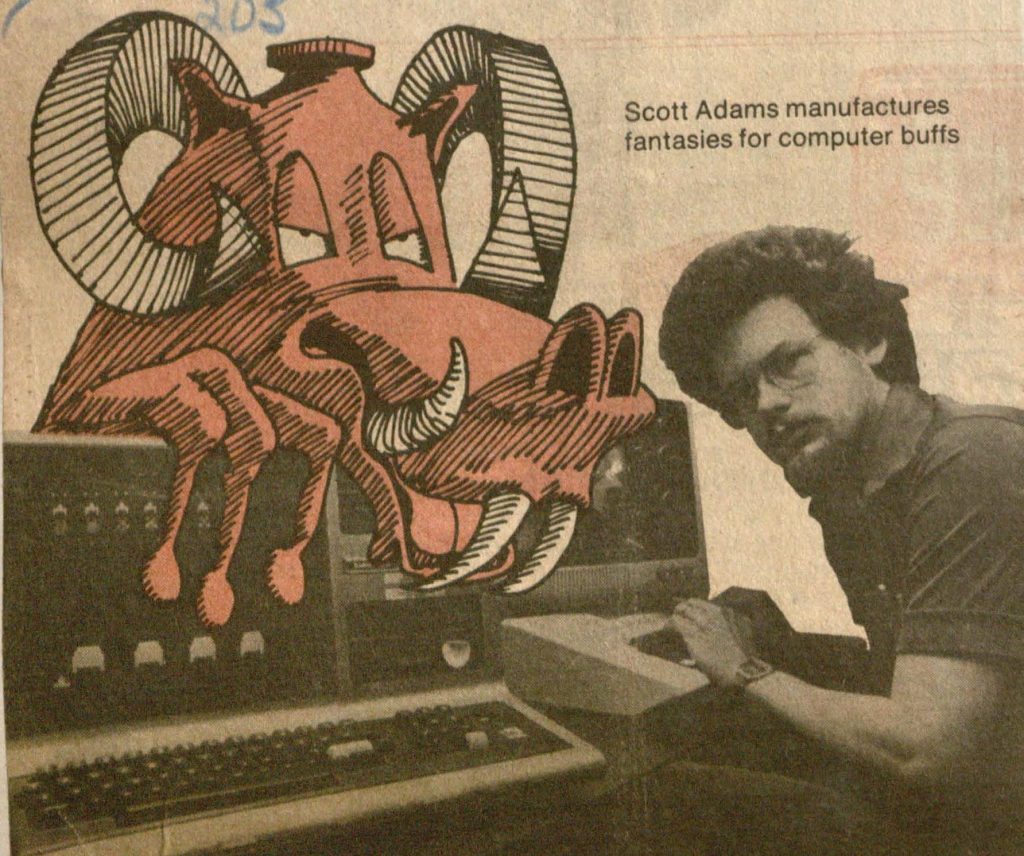
The history of the Internet is a complex story. In 1945 twelve years before Sputnik’s launch, Arthur C. Clark envisioned a communication network that would based on satellites. In 1969, DARPA (Defense Advanced Research Projects Agency) succeeded in linking two computers at Stanford and UCLA via ARPANET (Advanced Research Project Agency Network). The next year ARPANET formulated the protocol for an “interface message processor” allowing multiple computers at remote sites to communicate with one another.
The first email was transmitted in 1971. Three years later planning began on creating a decentralized protocol, which would link discrete networks. This work led to the formulation of a Transmission Control Protocol and Internet Protocol (TCP/IP), which serves as the basis of the Internet we know today. In 1983, a domain name system (DNS) was agreed on which dramatically simplified the numerical based IP address system. By 1987, there were more than 30,000 hosts on the Internet. It was in this context that Florida Institute of Technology received its IP license in 1988. A year later, the Berlin Wall fell and Tim Berners-Lee floated the idea of the World Wide Web (WWW) in an article published in MacWorld.*
Happy Birthday IP 192.203.97.0
November 2 is an auspicious day in history. The American frontiersman, Daniel Boone (1734), and Harlow Shapley (1885), the astronomer who discovered the sun was not at the center of Milky Way, were born on this day. For Florida Tech, this day marked our university’s entry into a conversation that has both enriched and imperiled our lives. A half century ago a University of California student named Jack Weinberg offered some prescient advice that might just be kept in mind as we celebrate our IP address’s thirtieth birthday — “Don’t trust anybody over thirty.” Point taken.
Note: Professor Micheal Gallo has the distinction of having the first internet email address issued to Florida Tech. gallo@fit.edu. Email address were limited to a maximum of 8 characters in the early days of the internet. My email address, patterso@fit.edu, makes me part of Generation8.
*Brandon Engel’s article “The Story of the Internet and the Colleges that Built It,” EdTech Magazine, November 5, 2013 provides a concise summary of the growth of the Internet.
| Documentation for the Secret History series comes from the Keuper Scrapbooks, photograph collection, and university papers in the Harry P. Weber University Archives or Florida Institute of Technology Special Collections, John H. Evans Library, Florida Institute of Technology, Melbourne, FL. |

